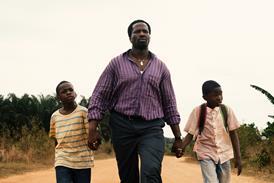To many ordinary film-goers, film critics are like sexologists: they spoil an enjoyable activity by talking about it too much. Film critics and sexologists argue their job is to help people enjoy that activity more - by realising what they're doing wrong and avoiding the positions that don't work or might annoy your partner.
But if working critics are slightly suspect (what kind of person goes to see a film at 9am'), film theorists - those who practise the discipline known as 'film studies', generally within the protective walls of academia - are on another planet. It's not just Joe Public who feels no real-world connection with film theory - the industry rarely, if ever, checks out the state of play either.
A brief history of film theorists
And yet there was once an umbilical link between film studies and film practice. It's true that the seismic revolution in narrative film style between 1903 and 1918 - with the discovery of continuity editing, close-ups and eye-line matching - was mostly worked out by film-makers themselves on a trial-and-error basis.
But the most radical theorist of montage, Sergei Eisenstein, was a director; in the late 1950s and early 1960s, a whole generation of French theorists (Godard, Truffaut, Rivette) made the leap from theory to practice, thereby launching the New Wave; and even in the US, the early 1970s saw a new injection of energy from hardline intellectual critics such as Paul Schrader - who, before his patchy directorial career, juggled theory (including a book-length study of Ozu, Bresson and Dreyer) with film scripts (Taxi Driver, Raging Bull).
Then, in the late 1970s and early 1980s, film studies took a wrong turn. Blame Saussure, Lacan and a proliferation of cosy professorships - the fact was that the dominant psycho-semiotic approach didn't have much to say to either viewers or film-makers about the way cinema is constructed and experienced. Worse than that, it felt as if we were being told by a group of high priests that we were living in a world of illusion we would emerge from only when we were initiated into the mystic secrets of Marx, Freud and Foucault.
If you've been bored by post-structuralist jargon and haven't looked this way for a while, it may have escaped your attention that there is a good-looking new kid on the film studies block: the cognitive approach.
In the words of one of its practitioners, Carl Plantinga, this blend of neuroscience, evolutionary psychology, linguistics and other disciplines tends 'to favour naturalistic explanations of filmic phenomena that assume we make sense of films in many of the same ways we make sense of the real world'. One of the charms of cognitivism is the way it tussles with what one of its founding fathers, David Bordwell, calls 'middle-level problems' and 'piecemeal thinking' - without trying to come up with a General Theory of Everything.
Cognitive therapy
Some of the topics taken on by the cognitivists include how cinematic suspense works; the effects of digital technology on our perception and reading of films; how and why we identify with characters; the connection between point-of-view editing and audience emotion; and how eye movements determine our uptake of screen information.
That such questions actually have some bearing on film-making was brought home to me by a recent piece in The New York Times media section, reporting the results of a study showing that men tend to be more moved by films when they know they're fictional. Translated into box-office terms, this means 'producers of emotional films can increase their male audience by emphasising the film's disconnection with reality'.
It always takes a while for theory to trickle into the marketplace - witness the way the comparative mythology of the 1930s and 1940s influenced the scriptwriting gurus of the 1970s and 1980s. Anyone who wants to steal a march on the future could do worse than to start delving into cognitivism.

















No comments yet